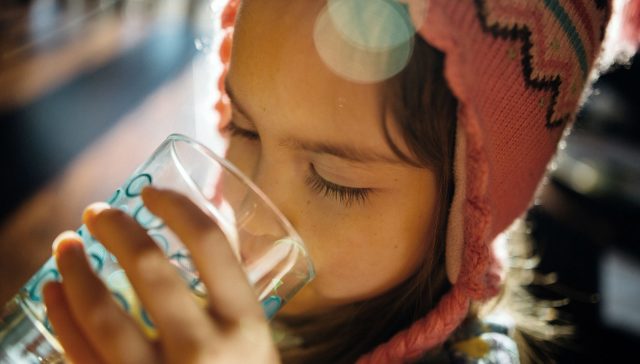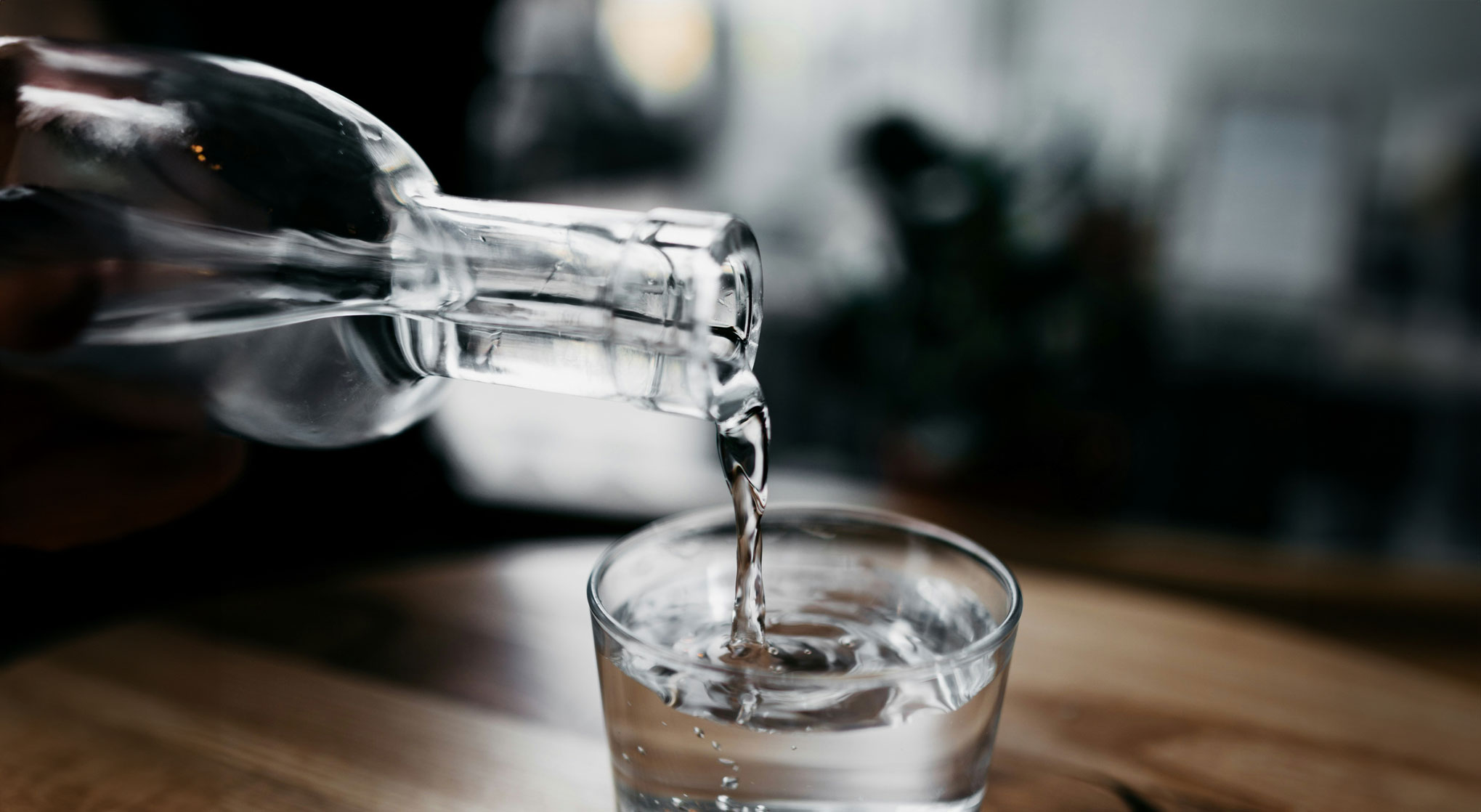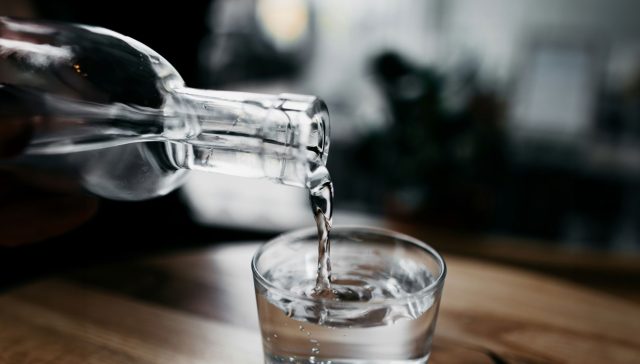
There are many options for what to drink, but water is the best choice for most people who have access to safe drinking water. It is calorie-free and as easy to find as the nearest tap.
Water helps to restore fluids lost through metabolism, breathing, sweating, and the removal of waste. It helps to keep you from overheating, lubricates the joints and tissues, maintains healthy skin, and is necessary for proper digestion. It’s the perfect zero-calorie beverage for quenching thirst and rehydrating your body.
How Much Water Do I Need?
Water is an essential nutrient at every age, so optimal hydration is a key component for good health. Water accounts for about 60% of an adult’s body weight. We drink fluids when we feel thirst, the major signal alerting us when our body runs low on water. We also customarily drink beverages with meals to help with digestion. But sometimes we drink not based on these factors but on how much we think we should be drinking. One of the most familiar sayings is to aim for “8 glasses a day,” but this may not be appropriate for every person.
General recommendations
- The National Academy of Medicine suggests an adequate intake of daily fluids of about 13 cups and 9 cups for healthy men and women, respectively, with 1 cup equaling 8 ounces. [1] Higher amounts may be needed for those who are physically active or exposed to very warm climates. Lower amounts may be needed for those with smaller body sizes. It’s important to note that this amount is not a daily target, but a general guide. In the average person, drinking less will not necessarily compromise one’s health as each person’s exact fluid needs vary, even day-to-day.
- Fever, exercise, exposure to extreme temperature climates (very hot or cold), and excessive loss of body fluids (such as with vomiting or diarrhea) will increase fluid needs.
- The amount and color of urine can provide a rough estimate of adequate hydration. Generally the color of urine darkens the more concentrated it is (meaning that it contains less water). However, foods, medications, and vitamin supplements can also change urine color. [1] Smaller volumes of urine may indicate dehydration, especially if also darker in color.
- Alcohol can suppress anti-diuretic hormone, a fluid-regulating hormone that signals the kidneys to reduce urination and reabsorb water back into the body. Without it, the body flushes out water more easily. Enjoying more than a couple of drinks within a short time can increase the risk of dehydration, especially if taken on an empty stomach. To prevent this, take alcohol with food and sips of water.
- Although caffeine has long been thought to have a diuretic effect, potentially leading to dehydration, research does not fully support this. The data suggest that more than 180 mg of caffeine daily (about two cups of brewed coffee) may increase urination in the short-term in some people, but will not necessarily lead to dehydration. Therefore, caffeinated beverages including coffee and tea can contribute to total daily water intake. [1]
| Age | Daily Adequate Intake |
| 1-3 years | 4 cups, or 32 ounces |
| 4-8 years | 5 cups, or 40 ounces |
| 9-13 years | 7-8 cups, or 56-64 ounces |
| 14-18 years | 8-11 cups, or 64-88 ounces |
| men, 19 and older | 13 cups, or 104 ounces |
| women, 19 and older | 9 cups, or 72 ounces |
| pregnant women | 10 cups, or 80 ounces |
| breastfeeding women | 13 cups, or 104 ounces |

Preventing Dehydration: Is Thirst Enough?
A healthy body is designed to send thirst signals when the body becomes depleted of fluids. Thirst is the desire to drink, and is not only driven by physiological cues but behavioral cues. [2] An example of a behavioral prompt is water temperature; research suggests that people tend to drink the most water when it is served at room temperature even though cooler drinks are rated as most pleasing to taste. We are also often influenced to drink (and eat) more in social settings.
As we age, however, the body’s regulation of fluid intake and thirst decline. Research has shown that both of these factors are impaired in the elderly. A Cochrane review found that commonly used indicators of dehydration in older adults (e.g., urine color and volume, feeling thirsty) are not effective and should not be solely used. [3] Certain conditions that impair mental ability and cognition, such as a stroke or dementia, can also impair thirst. People may also voluntarily limit drinking due to incontinence or difficulty getting to a bathroom. In addition to these situations, research has found that athletes, people who are ill, and infants may not have an adequate sense of thirst to replete their fluid needs. [2] Even mild dehydration may produce negative symptoms, so people who cannot rely on thirst or other usual measures may wish to use other strategies. For example, aim to fill a 20-ounce water bottle four times daily and sip throughout the day, or drink a large glass of water with each meal and snack.
Symptoms of dehydration that may occur with as little as a 2% water deficit:
- Fatigue
- Confusion or short-term memory loss
- Mood changes like increased irritability or depression
Dehydration can increase the risk of certain medical conditions:
- Urinary tract infections
- Kidney stones
- Gallstones
- Constipation
Is It Possible To Drink Too Much Water?
References
- The National Academy of Sciences. Dietary References Intakes for Water, Potassium, Sodium, Chloride, and Sulfate. https://www.nap.edu/read/10925/chapter/6#102 Accessed 8/5/2019.
- Millard-Stafford M, Wendland DM, O’Dea NK, Norman TL. Thirst and hydration status in everyday life. Nutr Rev. 2012 Nov;70 Suppl 2:S147-51.
- Hooper L, Abdelhamid A, Attreed NJ, Campbell WW, Channell AM, et al. Clinical symptoms, signs and tests for identification of impending and current water-loss dehydration in older people. Cochrane Database Syst Rev. 2015 Apr 30;(4):CD009647.
Keep Reading
Other articles


What Is Alkaline Water, and What Are the Benefits?


